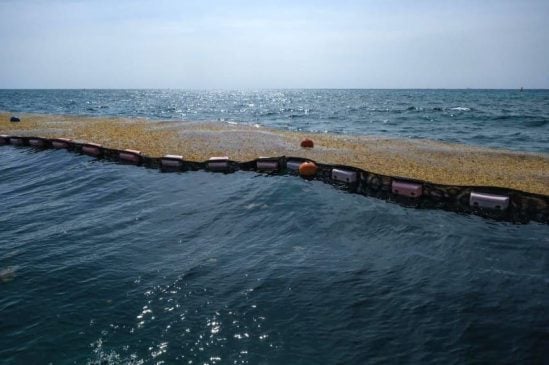Playa del Carmen, Q.R. — Additional beach cleaning personnel have been sent to the city center after a mass arrival of sargassum. The Secretariat of Sustainable Environment of Playa del Carmen intensified cleanup and collection efforts to deal with the mass seaweed arrival.

According to Samantha Álvarez, head of PDC Sustainable Environment, a team of 101 people are currently working daily to clean the beaches.
“The work is carried out in two shifts. The first from 6:00 a.m. to 3:00 p.m. and the second from 9:00 a.m. to 5:00 p.m., with the goal of keeping the coasts clean and safe for public use,” she said adding that “the number of visitors is excessive.”

Álvarez says the city is clearing an average of 200 tons of seaweed a day. The clearing efforts are done in coordination with the municipal, state and federal officials.
To clear the beaches, seven backhoes are being used which allows for the expedited collection of accumulated sargassum. She says the backhoes are necessary due to the considerable weight and volume of the wet sargassum.

She says that they have found mixed with the collected sargassum approximately 203 tons of washed up garbage that needed to be separated in order to reuse the sand.

“On average, between 150 and 200 tons of sargassum are collected daily, reflecting the magnitude of the problem and the need for ongoing intervention,” said Álvarez.

Irving Madrigal, the Directorate of the Federal Maritime Terrestrial Zone (Zofemat) in Playa del Carmen reported that during the most intense days, up to 200 tons has been collected daily on the municipality’s beaches. The hardest hit areas are the recessed beaches or alcoves such as Punta Esmeralda and Playa el Recodo.

Madrigal reported that 50 additional workers have been hired to address the emergency, allowing crews to operate at nearly 100 percent operational capacity to clean the coastal strip.

“The volume of landfall has been variable. There are areas severely affected and others that remain clean. However, we have maintained a constant presence to ensure the enjoyment of the beaches by locals and tourists,” the official said.

In addition to municipal efforts, private companies have also collaborated in containment and cleanup efforts. At least six hotels have deployed diversion barriers in front of their concessioned beach areas, with the aim of reducing the impact of sargassum on their beaches.

Madrigal also highlighted the coordination with the Ministry of the Navy (Semar), which has strengthened efforts to remove sargassum from the high seas. “Collecting it before it hits the sand brings multiple advantages as it prevents damage to coastal ecosystems and significantly reduces the volume that must be removed manually,” he explained.


